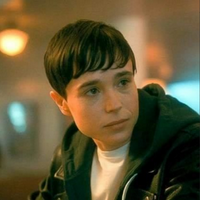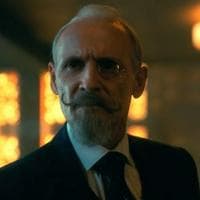Number One “Luther Hargreeves” MBTI Personality Type
Personality
What personality type is Number One “Luther Hargreeves”? Number One “Luther Hargreeves” is an ISFJ personality type in MBTI, 1w2 - so/sp - 612 in Enneagram, RLOAN in Big 5, ESI in Socionics.
ok, this guy is definitely not an E1, but I do agree that he's a gut type as opposed to E6, which is a part of the head triad (5, 6, & 7), the home of internal dialogue. As a result, they are always analyzing the world in order to figure it out, constantly having conversations in their head as a manifestation of doubt due to their separation from their emotions and body. They may seek some sort of belief system to hold on to for safety, but that doesn't mean doubt is removed entirely. E6 lives in the mental body after all and thus generally second guesses everything then fact-checks it in order to maintain their sense of safety. This is the reason why the head triad is called the "doing group." They are always torn between doing and trying to decide what to do, E6 is especially affected by this. Hence, analysis-paralysis. i don't see this in Luther. He was completely attached to the role his father gave him. Now, SO6 may experience the same attachment to some sort of authority, but ofc this doesn't happen until some verification is performed to prove its credibility for this is important to any E6. Again, there is nothing like this in the show. Gosh, he didn't even know exactly what he was doing on the moon and didn't even bother finding out. He's quite a trusting guy as you can see in the 3rd season where he didn't need to peer behind the scenes to determine if the Sparrow Academy was indeed trustworthy. Thus, he trusted his dad, not for the clarity which serves as a guide to navigate the world, but for the wholeness his role gave him to his life. Because after Luther finds out he was being betrayed, his purpose was lost which then his foundation for identity as a superhero crumbled. He's not an E1 because I didn't see any single moment in the whole 3 seasons of the show as of now which shows his feeling of superiority from knowing what is right and wrong. E1s know the truth like God whispered it to them in their dreams and they're just relaying it to the world. It is said that E1s are the judge judging the judge. We don't see that in Luther. He may be a follower and a rule enforcer but he's not someone who's preoccupied with getting things "right" in order to be in the "right" position, devoid of wrongs and mistakes. Perfection is this type's trap and thus control is what they desire since they quickly notice what's wrong in a setting so they see it as their duty to correct it. You don't really see Luther like that as he only knew to do what he was being told to do. Therefore, lacking a sense of self. He may be concerned about doing the good thing but I think that's more so in service of the group he merged himself with. Furthermore, his character development revolved around finding his own footing without the grip his father once had on him. Plus, that grip was something Luther gave willingly for it gave him something to believe in which helped him define his sense of self. Hence, E9.
Biography
Related Personalities

Number Four “Klaus Hargreeves”

Number Five “Five Hargreeves“

Number Seven “Viktor Hargreeves”

Number Two “Diego Hargreeves”

Number Three “Allison Hargreeves”

Number Six “Ben Hargreeves”

Sir Reginald Hargreeves

Lila Pitts















